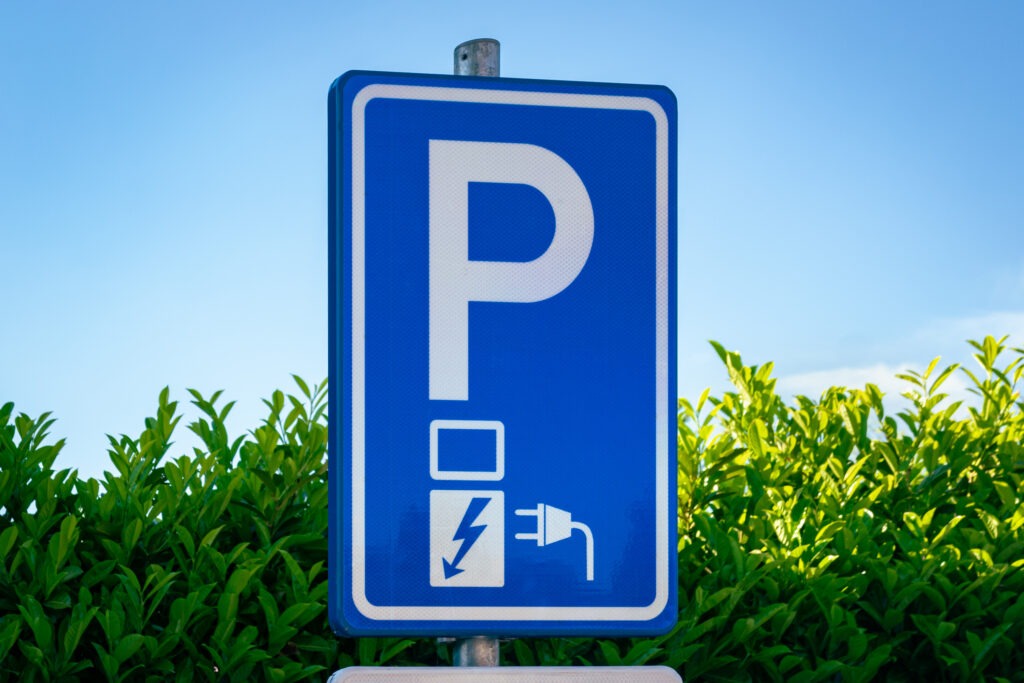European EV market continues its rollercoaster ride in May
15 July 2024

Registrations of electric vehicles (EVs) fell further than the overall passenger-car market in May. José Pontes, data director at EV Volumes, analyses the data with Autovista24 editor Tom Geggus.
Europe’s EV market struggled in May, with a total of 226,178 battery-electric vehicles (BEVs) and plug-in hybrids (PHEVs) registered. This was down 10% year on year, more significant than the 3% fall recorded for the entire new-car market.
Plug-in vehicles captured 21% of the overall new-car market in the month. BEVs alone accounted for 14% of deliveries. All-electric registrations were down by 11% to 152,230 units. Meanwhile, PHEVs dropped by 10% to 73,948 units.
Hybrids were the only powertrain to see registration growth in May. Made up of full hybrids and mild hybrids, this sector ended the month up 15% year on year. This powertrain grouping captured 30% of the European new-car market. Combined with an EV share of 21%, over half of the region’s deliveries were electrified in May.
Meanwhile, registrations of petrol-powered vehicles fell by 6% and diesel by 11%. The latter fuel type captured 12% of the European passenger-car market in May. This is a far car cry from 50% in 2015, and even further from the 55% average experienced before that. At this rate, diesel will be dead by 2028, well before the 2035 ban.
In the first five months of the year, the EV share stayed at 21%, while BEVs accounted for 14% alone. The market has been on a rollercoaster ride between January and May. A decline in March was followed by a bounce in April. After five months, the market is up by 3% compared to the same period last year.
Past its peak?
The Tesla Model Y was the best-selling EV in Europe in May, with 11,236 registrations. The BEV’s biggest European markets included the UK (2,108 units), France (1,421 units), Germany (1,169 units), and the Netherlands (1,126 units).
However, the Model Y looks to have past its market peak, with its performance beginning to slow. This is happening as its competitors start to gain traction in the market. The refreshed Tesla Model 3 is cannibalising sales in some regions.
However, the provisional tariffs on BEVs made in China and imported into the EU could see some of this volume revert to the crossover. The provisional tariffs, implemented on 4 July, look to be finalised in November 2024.
The Volvo EX30 is applying pressure and was only 3,000 units behind in May as it took second. However, with Tesla’s peak-and-trough delivery routine, the Model Y is unlikely to lose the lead in June, which represents the end of another quarter.
The Chinese-built model recorded 8,262 registrations in May. The BEV’s results were more evenly distributed across Europe. The Netherlands (1,063 units) led the way, while Germany (992 units) and the UK (884 units), were close behind.
At €39,000, the EX30 is currently Volvo’s most affordable passenger car and is considerably well-priced given its premium standing. A peak is likely in June before possible provisional tariff effects in July.
The Tesla Model 3 came third in May with 7,865 deliveries. Its main markets were the UK (1,042 units), Spain (792 units), France (763 units), Germany (710 units), and Portugal (704 units).
First launched in 2017, it seems the BEV’s best days are behind it. This follows a substantial legacy with the model proving to be the most popular EV in 2019 and 2021.
Now, however, it fights for second place with the likes of the Volvo EX30. However, with tariffs potentially pushing prices upwards, sales could be impacted later in the year. However, some of the Model 3’s direct competitors would also be affected.
Immune to market fluctuations
The Audi Q4 e-Tron finished fourth in May with 6,708 registrations. The BEV’s top market in the month was the UK (units 1,563), with Belgium (1,067 units) and Germany (1,058 units) also seeing strong performances.
While it did not break any records, the model seems immune to broader market fluctuations, staying in the top five. This is probably due to its premium positioning. Yet the Q4 e-Tron may be vulnerable to competition from within the Audi brand. The Q6 e-Tron certainly holds the potential to cause disruption.
The Volkswagen (VW) ID.4 returned to form in fifth with 5,936 deliveries in May. The model’s domestic market of Germany was its most successful with 1,339 registrations. Then came Norway (741 units) and Denmark (702 units).
Demand for the model has recovered thanks to its recent refresh. The ID.4 is aiming to secure a top-five position in the full-year table. However, it will be exceptionally difficult for the BEV to claim third like it did in 2022 and 2023. Its path is blocked by the Volvo EX30, Audi Q4 e-Tron, and the Skoda Enyaq, which ended the month in seventh (5,339 units).
Above the Enyaq and supported by its refresh, the VW ID.3 took sixth with 5,683 deliveries, its best result since August 2023. Meanwhile, the Cupra Born returned to the table in 12th with 3,780 registrations. This meant VW’s MEB platform appeared five times in the top 20.
The PHEV leader
In eighth, the Volvo XC60 PHEV was the leading plug-in hybrid with 5,287 registrations. This was well above the next best-performing PHEV-only model, as the Mercedes-Benz GLC PHEV finished in 17th with 3,254 registrations.
Outside of the top 20, the BMW i5 reached 2,075 deliveries. While it did come close, this was not enough to beat the Porsche Cayenne PHEV (2,121 units).
Elsewhere, production ramp-ups have boosted several new models, such as the Renault Scenic EV. Recording 1,661 registrations in May, it is taking the fight to the carmaker’s current best-seller, the Megane EV (2,545 units).
However, the Scenic looks like it can go even further and break into the top 20. Its rival from Peugeot, the e-3008, is also ramping up. However, this is happening at a slower pace, with the compact crossover reaching 932 deliveries in May.
The Mini Countryman EV is seeing its production ramp up too, hitting 926 registrations in the month. The Mini Cooper EV and the Mini Aceman are both subject to the provisional tariffs on Chinese-built BEVs. Therefore, the carmaker could place special importance on the Countryman, given its German production location.
Still market leader
In the first five months of the year, the Tesla Model Y remained the best-selling EV in Europe. It posted almost twice as many deliveries as the second-place Tesla Model 3. While the crossover’s 2024 position seems assured, the story for the sedan could be different.
Over 9,000 units now separate the Model 3 from the third-place Volvo EX30. Both will be affected by the provisional import tariffs on Chinese-built BEVs. Yet the final effects on both models are still uncertain.
The first position changes occurred in sixth and seventh place. Both the Skoda Enyaq and the MG4 jumped two positions in the table. However, these models could experience very different performances in the second half of the year.
The Enyaq could climb a few more positions in 2024, benefitting from the provisional tariffs placed on its competitors. On the other hand, the MG4 will feel the effect, potentially losing positions by the end of the year should the carmaker opt to increase prices or slow deliveries to the EU.
The VW ID.4 jumped to 10th thanks to a strong month in May. The remaining position changes occurred in the second half of the table. The VW ID.3 jumped three spots to 13th, as it targets the top half of the table. Then, the Mercedes-Benz EQA climbed two places to 17th.
Further down the Hyundai Kona EV joined the table in 20th, pushing out the Audi A3 PHEV. This leaves just three plug-in hybrids in the table, namely the Volvo XC60 PHEV in fifth, the Mercedes-Benz GLC PHEV in 14th, and the Ford Kuga PHEV in 16th.
Tesla sees market share shrink
Considering popular EV brands in Europe, the top five spots were all taken by premium marques, an important market trend. Tesla’s share shrunk to 10.5% in May from 10.8% in April. However, the BEV manufacturer continues to lead over second-place BMW with a 10.3% share. With its quarterly reporting due to give it a boost in June, Tesla can be expected to recover a significant advantage.
Mercedes-Benz came third with a 9% market share, down from 9.4% in the previous month. In fourth, Volvo took an 8.8% hold, up from 8.6%. The Swedish marque was the only brand in the top five to see its share increase. In fifth, Audi’s share fell marginally, from 6.8% to 6.7%. This was the result of the Audi Q8 e-Tron’s poor performance in the month.
VW was the best-selling mainstream brand in sixth with a 6.2% share. This return to form for the German manufacturer could be followed by a ranking change in the coming months.
Comfortable lead for VW Group
With brands grouped under OEMs, VW Group benefitted from positive brand performances in May to hold on to 20.1% of the market. This meant the German OEM kept a comfortable lead over its competitors.
In second, Stellantis had a more difficult month with poor performances from a number of its brands. The conglomerate dropped to a share of 11.7%, compared to the 13.2% between January and April.
A prime example of this difficult month was the Fiat 500e, which failed to reach the top 20. A year before, it was a regular in the top five. The Italian BEV could do with a refresh, and would also benefit from a price cut. Upcoming models such as the Renault 5, Hyundai Inster and the Citroen e-C3, offer more for less money.
Both BMW Group (10.9%, up from 10.8%) and Geely–Volvo (10.7%, up from 10.4%) surpassed Tesla, which dropped to fifth. The German OEM benefitted from the Mini Countryman EV’s production ramp-up while Geely-Volvo saw good performances across the board.
Mercedes-Benz Group (9.5% share) was stable in sixth and Hyundai Motor Group (8.1%, down from 8.2%) came seventh. The Korean OEM does not look like it will be able to climb higher anytime soon. Meanwhile, the Renault-Nissan-Mitsubishi Alliance (5% share) finished far behind its competition.



